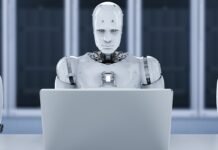Unveiling the Future: Unitree’s Revolutionary G1 Humanoid Robot
Unitree Robotics has just unveiled the G1, their groundbreaking humanoid robot that is reshaping the dynamics of the robotics landscape. The excitement around the trailer promises a new dawn in robotic capabilities, showcasing unparalleled flexibility and dexterity that could redefine our expectations of humanoid robots. This stunning reveal not only showcases the robot’s physical prowess but also signals a significant evolution in Unitree’s technological advancements.
A Stellar Introduction to the G1
As highlighted in the captivating trailer, the G1 stands out with impressive agility, surprising observers with its smooth and realistic movements. The release of such a sophisticated humanoid robot just weeks after Boston Dynamics’ latest unveilings raises eyebrows. Unitree has clearly accelerated its development timeline, delivering a product that some experts didn’t anticipate for a much longer timeframe.
Competitive Pricing That Disrupts the Industry
Unitree’s G1 is priced at $116,000, making it a cost-effective alternative to similar humanoid robots currently available on the market. Competitors have struggled to match this price point without compromising on capability, giving Unitree an advantage that may be hard to overcome. The combination of affordability and advanced features positions the G1 as a significant competitor in the robotics arena.
Enhanced Movement Capabilities
One of the standout features in Unitree’s G1 is its extraordinary movement capabilities. Unlike traditional robots, the G1 can twist and turn in ways that far exceed human flexibility. This enhanced range of motion illustrates the potential for humanoid robots to outperform humans not just in repetition, but in the complexity of tasks they can tackle.
Ingenious Engineering: Hollow Joint Wiring
Unitree has incorporated hollow joint wiring within the G1, enhancing its efficiency and allowing for a more compact design. This innovative approach contributes not only to improved movement but also optimizes storage, proving that practicality and performance can coexist in robotic design.
Stability Under Duress
The stability of the G1 during impact testing is impressive and reflects its robustness in real-world environments. Unlike many humanoid robots that struggle with balance, the G1 maintains stability when subjected to unexpected forces. This durability extends its application to hazardous environments where unpredictable conditions often pose challenges for conventional humanoid robots.
Achieving Swift Mobility
The G1 can reach speeds of up to 3.3 meters per second. Although it does not break world records set by previous models, the agility of the G1 is commendable. The ability to run at nearly 2 meters per second puts it in an elite class of humanoid robots designed for quick response and agility.
Advanced Learning Mechanisms
Unitree has integrated advanced learning algorithms into the G1’s architecture. By employing imitation and reinforcement learning, the robot is able to learn and adapt by simulating tasks in an environment similar to NVIDIA’s Isaac Sim. This capability allows the G1 to navigate real-world scenarios more effectively, showcasing the potential for autonomous functions.
Dexterous Object Manipulation
The G1 is not just about movement; it excels at manipulation tasks as well. The robot can grasp and apply force to various objects, such as cracking walnuts and even opening cans. Such dexterity indicates a significant leap in robotic hand technology, allowing for versatile applications in both research and practical settings.
A Step Forward for Research Platforms
The development of the G1 opens new doors for researchers in robotics and AI. The reduced price point presents opportunities for educational institutions and smaller labs to access advanced humanoid robotics, facilitating cutting-edge research and innovation in the field. As technology continues to evolve, the potential for valuable contributions to robotics research is tremendous.
Safe and Controlled Precision
One impressive demonstration involved the G1 performing tasks with remarkable precision, such as soldering. This highlights its refined control and emphasizes how advancements in robotic arms and grippers are paving the way for complex tasks typically reserved for skilled human hands.
Keeping Pace with Competitors
The rapid advancements made by Unitree serve as a wake-up call for competitors in the industry. Previously, Boston Dynamics was seen as the leader; however, the quick evolution of the G1 shows that the competitive landscape is far more dynamic than expected. Unitree is proving that agility and innovation can come from unexpected places.
Global Impact of Unitree’s Robotics
As the robotics race accelerates, it’s evident that companies like Unitree are making significant contributions to the global robotics narrative. They are bolstering and challenging existing paradigms while showcasing China’s growing influence in this technological arena. The G1 is just one indicator of the innovation surge taking place on a global scale.
Looking Forward: Anticipating the G1’s Release
With units expected to ship in approximately five months, the excitement surrounding G1 continues to build. Researchers and tech enthusiasts alike eagerly anticipate the applications and innovations that this robot will bring. As more details emerge, the potential for transformative use cases in various industries is becoming increasingly clear.
Conclusion: Embracing the Future of Robotics
Unitree’s G1 is more than just a humanoid robot; it represents a landmark achievement in robotics engineering. With exceptional features, competitive pricing, and a strong emphasis on adaptability and learning, the G1 is poised to challenge our perceptions of what humanoid robots can do. The G1 is set to usher in a new era of robotic capabilities, making it a compelling figure in both the research community and the commercial robotics market.







